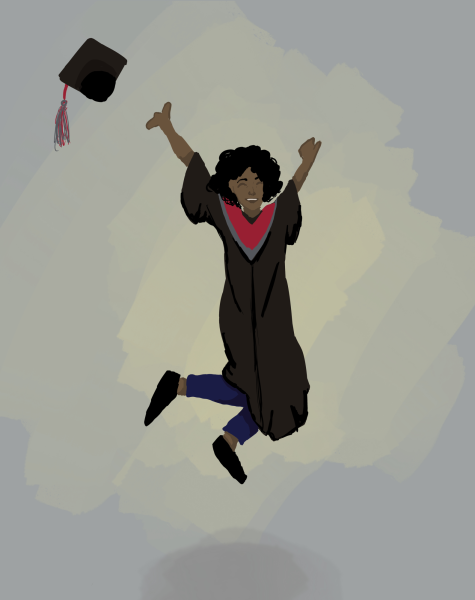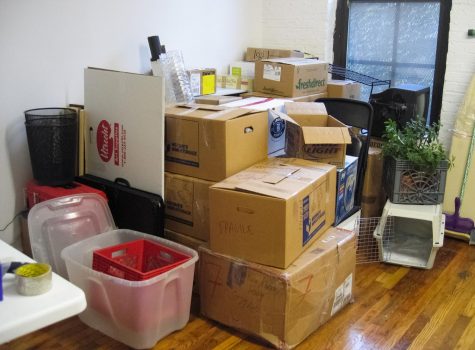Living positive, an HIV experience
January 30, 2015
Confucius said, “Our greatest glory is not in never falling, but in rising every time we fall.”
In the early 1980s, gay men across the nation fell hard; they did so in every sense of the word.
Physically, they fell ill. Logistically, they fell in numbers. Medically, they fell at the mercy of experimental treatments. Socially, they fell victim to the insensitivity of a heteronormative nation.
Heartbreakingly, they fell to their knees at lovers’ and dear friends’ funerals.
It was truly an era of descending, all too often, 6 feet beneath the earth.
From 1981 to 1989, the LGBTQ community, along with intravenous drug users and many others, would live out a plague. By the end of ’89, there were 100,000 reported AIDS cases in the U.S.
But in true Confucian form, they would rise.
They would band together to fight one of the most uphill battles in medical and political history. The HIV/AIDS movement’s ascension can be described as a transition from merely surviving to thriving.
Thirty-five years later, the fight is still nowhere near over.
Today, there are more than 1.2 million Americans living with HIV, 14 percent of which are unaware of their infection.
This week, I had the absolute privilege of interviewing two HIV-positive individuals who, like their aforementioned brethren, turned an initially-devastating diagnosis into fuel to rise to the challenge and impact the lives of others.
Leon Golson, director of Prevention Programs at the HIV/AIDS Resource Center, was diagnosed in the late ‘80s and has worked in HIV prevention for 30 years.
Michael Barnes, health education youth outreach coordinator at the Lifelong Aids Alliance, learned his status in 2012 at the age of 23.
Separated by a generation, each experienced different obstacles at the time of their diagnosis.
Golson said he was quite pessimistic at the time, and that the test confirmation registered as an “’I kind of figured’ type of moment” for him.
But afterward, it was a matter of sinking in.
“I was numb for two weeks. I was on autopilot,” Golson said. “After the two weeks, the floodgates opened. That was the most difficult time.”
By that point, the AIDS crisis had claimed many of Golson’s friends.
“I was going to a lot of my friends’ funerals, standing over their caskets sweating bullets wondering, when is my turn gonna come up?” Golson said.
Barnes’ experience wasn’t plagued by uncertainty like men of Golson’s generation, but came as a shock. He went in for a routine physical and came out with a diagnosis.
Luckily, like Golson, Barnes was educated about HIV/AIDS before his diagnosis.
“I knew it was a life-changing diagnosis, but I knew that I wasn’t going to die,” Barnes said. “I think my thoughts were a lot of self-shame and a lot of the stigma around HIV.”
Barnes imposed it on himself. He thought, “How could you have been so stupid and “How could you not have known better.’
“I had a sense of shame associated with people in the ‘80s dying with no knowledge of what was going on, and now in 2015, we know,” he said.
The diagnosis is only the beginning.
Over the years, Golson has struggled with romantic relationships and described the opportunity to strike up a new one as far and few between.
He recently ended a long-term relationship with a partner and hopes to enter one again. While dating, his positive status serves as a screening process for potential partners.
When it comes time to disclose, he’s developed a thick skin to rejection.
“Instead of me falling into a deep state of depression, I think ‘maybe that’s a good sign that I don’t need you in my mix anyway,’” Golson said.
Misconceptions, at both the interpersonal and societal levels, prove frustrating for Golson.
“For people with HIV, there’s an automatic judgment of ‘I’m less than,’ or that I’ve been extremely sexually irresponsible,” Golson said.
Judgments like these marginalize people with HIV and discount an individual’s personal experiences.
“It tends to strip me of my humanity,” he said.
Unfortunately, the historically-rooted shame surrounding HIV has stood the test of time.
“It’s definitely one of the most stigmatized diseases out there,” Barnes said. “I think this fuels unsafe sex, among other things.”
He described the process as “coming out all over again,” except with a more intense stigma.
Disclosing is difficult, but both Barnes and Golson have made it a priority to tell their stories. Through their work, they encourage others to do the same.
For those both young and old who have been infected with HIV, Golson stresses that the power is in their hands.
“It doesn’t to have to mean the end of anything unless you want it to,” he said.
For newly-infected individuals, Barnes specified the importance of knowing that you’re not alone.
“I think testing is a pretty alienating and isolating experience,” Barnes said. “You have to go through some stuff first.”
But after coming to terms, Barnes emphasized the importance of building a social support network.
Aside from the social implications of being infected, Barnes identified a second primary struggles people with HIV face: the world of health care.
Drugs have advanced significantly since Golson’s time. Today, both Golson and Barnes take one pill a day.
However, for Golson this wasn’t always the case.
“My first regimen of meds were 14 pills a day, which came with severe and unpredictable diarrhea,” Golson said. “There were times when I was mid-presentation at work when I would have to run out of the room.”
Medications are still progressing, and in addition to their regimen, Barnes and Golson made holistic physical changes at the time of their diagnosis that led to where they are today. Golson specifically identified diet, exercise and stress management improvements.
With stable health, the future is still uncertain to those infected with HIV.
“Aging with HIV is a little scary,” Barnes said.
But you don’t have to do it alone; Barnes advised finding a health practitioner who works with you openly and honestly.
“You have the right to a doctor that you can be honest with about the kind of sex you’re having and the substances you’re using,” Barnes said. “You have the right to say ‘Actually, I don’t want you to be my doctor.’”
Barnes explained that it is your responsibility as a health care consumer.
Golson advised individuals to start acting on what they know now, when they need to. Take prevention and harm reduction measures in the moment.
“That’s part of the reason we’re still seeing new infections. HIV didn’t just fall out of the sky yesterday,” he said.
Responsibility proves to be the underlying theme, and it is a word we millennials have forgotten.
We are one of the luckiest generations in terms of information consumption.
We have an advantage that our parent’s generation didn’t have during the AIDS crisis: mass amounts of information available at the click of a button.
Yet, I still encounter individuals who don’t know exactly how HIV is transmitted. They’re having sex and don’t know the risk factors for STIs.
After writing this column for nearly two years, I have found that information saves lives.
Learn about your body, risk factors, and diseases before it’s too late.
After all, as the old adage goes, hindsight is 20/20. But it doesn’t do you much good after the fact.


















